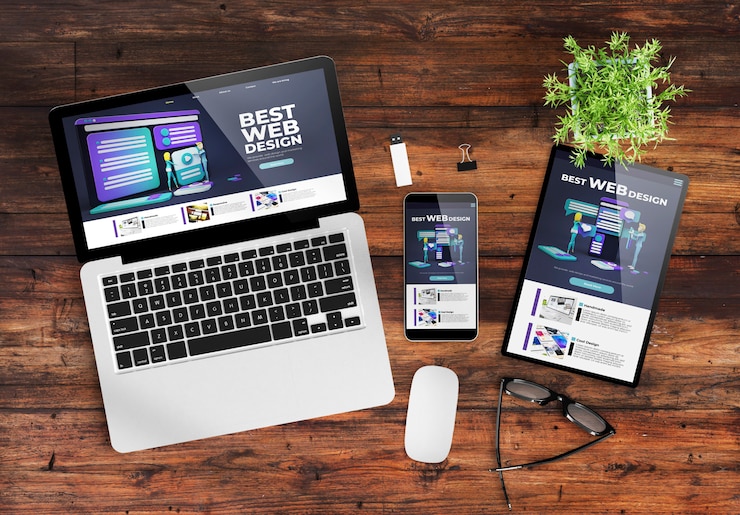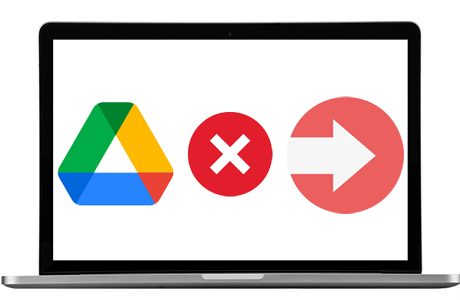Nowadays mobile traffic has extended as more and more people are using mobile devices to access the internet. And their choice of searching required information on Google ranking websites has also increased because of their mobile-friendliness. Hence to maintain such wide users is essential to develop and provide a fully functioning mobile-friendly website regardless of the screen size or device they are using.
Before moving ahead it is important to understand what exactly we mean when we say a website is mobile-friendly and what Mobile Friendly Test is?
Website mobile-friendliness is the overall performance of a website on mobile devices that provides a quality experience to mobile users. Thus enhancing website performance on any mobile is crucial because mobile device usage is growing day by day.
Checking mobile friendliness without any assistance is difficult. That is why Google has introduced search calculation guidelines. With the help of this, it becomes easier to find out how user-friendly your website is and whether it is easily accessible or not.
Mobile-Friendly Test is a special tool that helps to see how friendly your website is operating on different devices. It allows you to easily carry out a mobile site test and tells a website’s score in terms of its performance on all mobile devices. The test score will enable you to have an idea of whether your website is providing a good mobile user experience or not. It also says that the website falls into the mobile-friendly category and shows good results in the mobile-friendly test.
With the help of this test, you will also get specific instructions on what on your site needs to be updated, fixed, or modified to make it work better on all mobiles.
Making the site fast and good only on desktop but slow and not so good on mobile will not only lead to poor ranking but also to reduced traffic which ultimately causes less revenue. By making a website mobile-friendly, you will not only please your users, but you can also remarkably improve your search engine ranking by appearing higher in search engine positions.
Google search calculation parameter has been confirmed as a part of the overall ranking criteria. This is a set of factors provided by Google that help in determining how convenient your site’s mobile version is to users.
Previously Google has put a fine on sites that offer a poor experience to mobile users and gives much importance to the websites that take relatively less time to load and look good on all mobile devices. The more quickly you make your site mobile-friendly and ensure that Google recognizes it, the faster it can be ranked applicable by Google.
However, testing your site on mobile devices can be time-consuming and expensive due to the availability of a large number of different mobile devices. But there is a way out of that. There are Mobile-friendly testing tools available online that measure how adaptive a website appears on mobile.
Most of these tools can suggest ways to make your websites look better and faster on mobile. They also suggest needed adjustments in particular areas. The testing score will also give you an idea of your website’s appearance on mobile and its performance for mobile users.
Nine Best 9 Tools To Test If Your Website is Mobile Friendly
Here we will discuss 9 such tools that can give you a brief about your website’s mobile-friendliness.
1. Google Mobile-Friendly Test
This is the most popular and easy-to-use mobile-friendly tester. This tool is developed and managed by Google. You just need to put your website URL and this tool will analyze your site on mobile. It helps you find out issues that prevent your site from appearing in the google searches on mobile.
If your site is mobile-friendly and meets google standards it gives you a green signal. And in case it does not pass the test and fails it announces it as not mobile-friendly.
This tool tells you if Google sees your page as mobile-friendly or not. If it says “no” then the page will be set down in the mobile search results and approve similar pages from other sites that are mobile-friendly.
2. MobiReady
MobiReady is a very innovative and useful website testing tool that shows how a particular page appears on different mobiles. You can see how your site performs on multiple sizes of mobile devices at once. It compares your sites against popular websites and gives specific recommendations of areas you need to do well and need improvement to climb up.
This tool also provides a detailed report of scores between 0 and 5 with 5 being the highest. The higher the score the more the web page is capable of performing and giving a great user experience on any mobile device. A low score indicates that the webpage is slow to load having components that can break the quality user experience.
3. W3C Mobile OK Checker
The World Wide Web Consortium (W3C) works to develop web standards. They have a handy mobile checker that provides specific recommendations on how to make your site more mobile-friendly and lets you know what changes need to be done.
You don’t require any special skills to use this tool. You just simply need to enter your URL address and a series of tests will be run on your website to determine how mobile-friendly it is. After completion of the test, you will get detailed information and analysis of your site whether it is low, medium, or severely critical. This helps in making necessary changes to improve the mobile-friendliness of your site.
4. Page speed insight
Use Google’s page speed insight tools to test the speed of your website for both mobile and desktop. It helps in providing specific recommendations to increase your website speed on different devices. It shows screenshots of how your website looks on mobile and desktop as well as gives you speed scores for both mobile and desktop as well. analyzing your website in PageSpeed Insights will give you a detailed analysis of what needs to be fixed and things that have already been done correctly.
5. Google AMP testing tool
AMP means Accelerated Mobile Pages. This tool is developed by Google with the goal to make fast-loading pages that look good on mobile devices and deliver the best possible mobile experience to its users. In today’s time having mobile-friendly websites is very important for your online presence.
Using the AMP testing tool you can check the validity of an AMP page. This test will also enable you to create mobile-optimized content to load instantly on all devices no matter what type of mobile devices you are using. It also finds out issues related to AMP that are preventing your site’s appearance in search results.
6. Google TestMySite
Speed matters in ranking no matter how fast your site is on the desktop. If the site speed is slow on mobile it may affect your ranking position. TestMySite is a mobile testing tool from Google that analyzes how fast a website is on mobile and it also provides ways to make the site faster and enhance users’ mobile site experience. With the help of this tool, you can see the load time of your site on mobile.
It also generates a personalized report to each audience with all major and minor details and also tells the next step to be followed.
7. Varvy Mobile SEO
Varvy Mobile SEO ( Search Engine Optimization) is one of the most simple and useful mobile-friendly mobile SEO testing tools.
It will test your site and help to know whether it is mobile-friendly and is complying with Google guidelines and SEO practices or not.
This tool is simple to use, you just need to enter your URL and Varvy will provide you with helpful insights like page load quickly, the right security and accessibility, paid links, a page displaying well on mobile, and many more. Additionally, it gives recommendations of what is exactly wrong and what adjustments are needed to be done
8. RankWatch
RankWatch is a simple tool to check the mobile-friendliness of your website. It provides descriptive information on whether the site is mobile-friendly or not, it also provides you with precise rankings of your website in popular search engines like Google, Bing, etc.
Testing with RankWatch will give you the page score of your website. You can easily get the result containing information about the mobile viewport, its content, the size of text and links, and whether the buttons on the website are mobile-friendly or not.
9. LambdaTest’s mobile-friendly checker
LambdaTest is one the most widely used tools to test a website’s mobile-friendliness. It offers you an extremely handy mobile site test that allows you to check the friendliness of your mobile device. It helps you to assess your website’s friendliness on a cloud of more than 3000 real devices, browsers, and operating systems on a wide range of different resolutions.
Using the LambdaTest platform you can test and debug your mobile website on multiple mobile handsets of different screen sizes connected to a live mobile network in different locations. Once you run your website mobile test you will be able to see how your website is performing on a mobile device.
After completion, it generates a website performance report that helps in identifying underlying issues affecting your website’s performance. Hence helping you in making the required changes. Additionally, it provides you with the feature of recording the entire test session in a single video and capturing screenshots so the other team members can get access to the entire test session easily.
Moreover, LambdaTest’s LT Browser helps you to view your mobile testing of websites on different preinstalled mobile device viewports. LT Browser is a developer-friendly browser that is more powerful than the default Android and iOS browsers and helps you debug and test any mobile website flawlessly.
Read Also:























